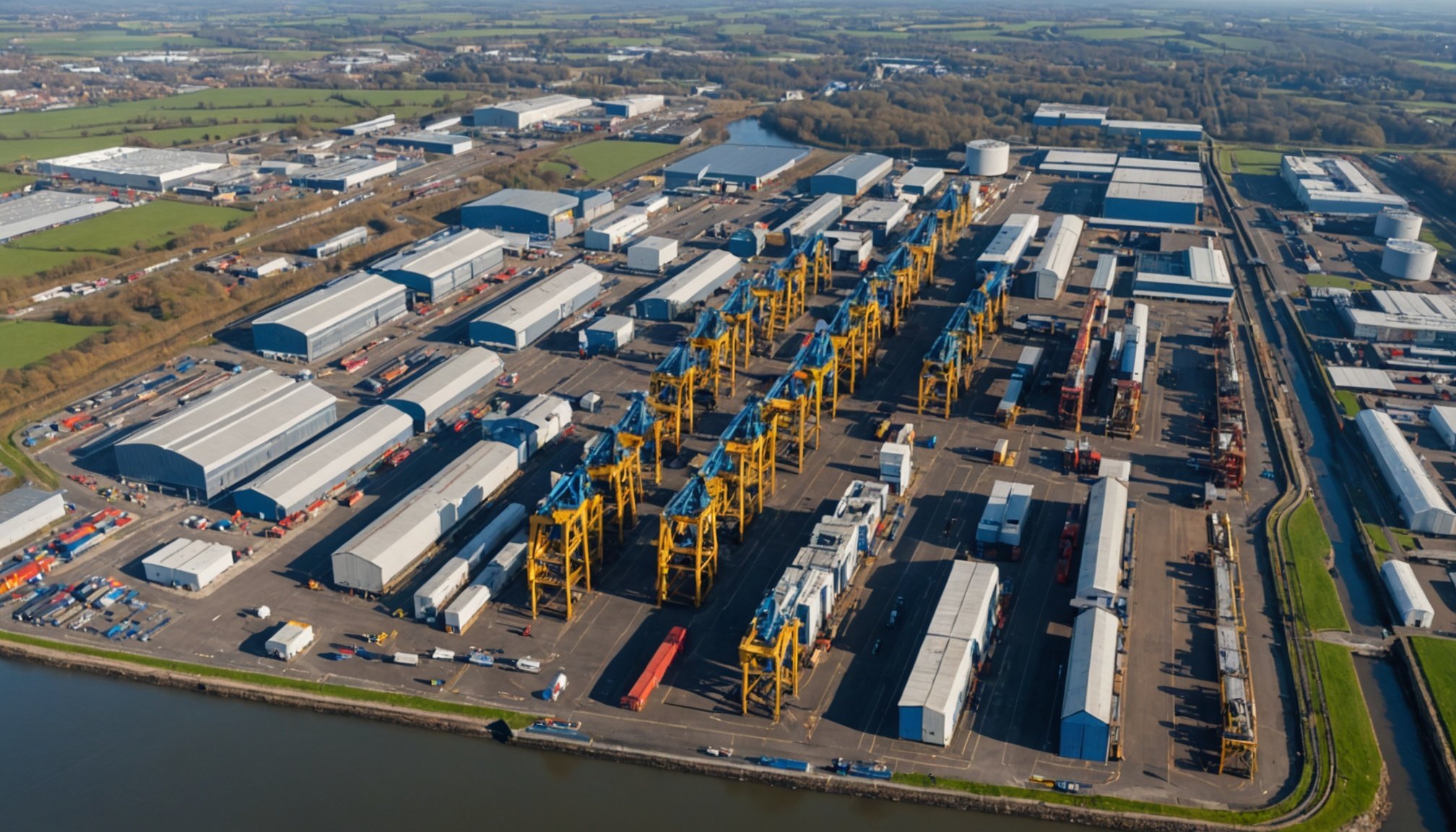Understanding the Current Landscape of UK Industrial Areas
The UK industrial market has witnessed notable shifts, with recent trends indicating a significant market decline in specific regions. Several factors contribute to this downturn. One primary aspect is the relocation of industries to areas with lower operational costs. Such relocations can lead to vacancies and diminishing investments in certain urban industrial areas. Additionally, technological shifts and automation have reduced the need for extensive industrial sites, further impacting demand.
Location and demographics play a crucial role in the investment landscape. Investors need to meticulously analyse these elements to inform their decisions. Areas with robust transport links, accessibility to major motorways, and proximity to skilled labor pools tend to be more attractive despite wider market decline. Furthermore, demographic considerations, such as a growing population with a demand for new services or products, can refine investment choices.
Topic to read : Exploring the Financial Advantages of Transforming Commercial Real Estate into Co-Working Spaces in Manchester
The current landscape necessitates a strategic focus on how and where investments are made. For investors, it’s imperative to evaluate long-term potential while understanding that market decline doesn’t preclude opportunities. Real estate tailored to specific industry needs and demographic requirements could still promise lucrative returns even amid broader economic challenges.
Understanding the Current Landscape of UK Industrial Areas
In recent years, the UK industrial market has faced notable challenges, particularly characterized by market decline in certain locations. An analysis of current trends reveals several contributing factors. Firstly, shifting demographic patterns have altered market demand, impacting investment decisions. Industries migrating towards more technologically advanced regions also play a pivotal role in these shifts. As businesses search for efficient operations, their choice of location has become paramount.
Have you seen this : Revitalizing urban landscapes: harnessing public green spaces to foster deep community connections
Recognising the importance of location and demographics is crucial in strategic investment. Areas suffering from industrial decline often face poor infrastructural development or insufficient skilled workforce availability. These factors can dissuade investment and exacerbate market decline. Meanwhile, areas with better infrastructure and skilled workforce continue to attract investors, maintaining a more stable industrial market environment.
The investment landscape within the UK necessitates adapting strategies to overcome these challenges. Investors must focus on identifying regions where potential growth aligns with demographic advantages. Understanding local market conditions deeply can empower smarter investment decisions, fostering returns even in declining industrial markets. Strategic site selection, considering amenities and workforce capabilities, remains integral to mitigating the effects of broader market decline within the UK’s industrial sector.
Key Investment Strategies for Declining Markets
Investors must focus on investment strategies to effectively navigate declining markets. By maximizing returns and capitalizing on the decline, it is possible to identify potentially lucrative opportunities within this challenging landscape.
Identifying Opportunities in Distressed Assets
To uncover value in distressed properties, investors should evaluate them for investment potential. This includes analysing the scope for refurbishment or repurposing and understanding the market demand to gauge potential returns on investment. Identifying such opportunities requires careful assessment of location-specific factors and demographic trends.
Long-Term vs Short-Term Investment Approaches
Balancing the risks associated with short-term gains versus the benefits of a long-term stabilization strategy is crucial. Short-term investments might offer quick returns but carry greater risks in a declining market. Conversely, a long-term approach can yield stability and sustainable growth. Reviewing real-life case studies of successful investments can offer valuable insights into strategic decisions.
Leveraging Government Incentives and Policies
Utilising available government policies, such as grants and tax incentives, can significantly enhance investment outcomes. Understanding these incentives allows investors to make informed decisions and optimize capital expenditure. Case studies of thriving businesses highlight how effectively navigating these incentives can lead to significant gains.
Key Investment Strategies for Declining Markets
In the face of a declining investment landscape, successful navigation of the UK industrial market demands adept investment strategies. Flexibility in approach is vital, allowing investors to capitalize on decline rather than fear it.
Identifying Opportunities in Distressed Assets
Identifying potential in distressed properties is crucial. Evaluating distressed properties involves a thorough assessment of current market demand and potential return on investment. Contingency planning, which may include refurbishment or repurposing, can unlock hidden value. Targeting these properties wisely can result in significant returns, especially when aligned with current demand trends.
Long-Term vs Short-Term Investment Approaches
Balancing short-term gains with long-term stability is critical in declining markets. Short-term strategies focus on swift capital gains, optimizing current investments to leverage immediate returns. Conversely, long-term strategies involve stabilization phases, where patients yield benefits. Successful case studies demonstrate the rewards of these long-term commitments, highlighting stability as a key advantage.
Leveraging Government Incentives and Policies
Understanding and leveraging government incentives is transformative. The UK offers grants and tax incentives aimed at industrial conversions, easing investment burdens. By capitalizing on these programs, investors can mitigate risks and enhance profitability. Notable businesses have thrived by maximising these incentives, showcasing their potential to transform declining areas into promising opportunities.
Risk Management and Mitigation Techniques
Efficient risk management is vital when investing in declining markets, as these environments present unique challenges. Identifying and assessing specific investment risks is the first step toward crafting a robust strategy. In the UK industrial sector, risks may emanate from fluctuating market conditions, regulatory changes, or shifts in consumer demand.
Developing a tailored risk management strategy is paramount. This approach should include comprehensive market analysis and stress-testing potential investments against various scenarios. Strategies might involve assessing the return on investment under different market conditions or examining the resilience of the chosen location.
One crucial component of mitigating risk is diversifying investment portfolios. By spreading investments across various sectors and geographies, investors can minimize the impact of adverse movements in any single area. Diversification often involves selecting a mix of traditional industrial assets and new, resilient properties like mixed-use developments.
Diversification not only offsets risks but also enhances potential gains. By making strategic investments in the UK’s industrial market, investors can successfully mitigate challenges and potentially benefit from eventual market recovery.
Current Market Trends and Future Forecasts
In the ever-evolving UK industrial landscape, staying abreast of key market trends is crucial for investors aiming to make informed decisions. Emerging industrial trends offer insight into potential recovery and growth areas, serving as a beacon for future opportunities. These trends reveal subtle shifts in demand, technology adoption, and geographic preference within the sector.
Industry forecasts paint a complex picture of the UK’s industrial future. Predictions suggest a gradual recovery as adaptation to technological advancements gains momentum. Markets leveraging cutting-edge solutions and sustainable practices are likely to see substantial growth. Investors should keep an eye on trends like increased automation and green technology implementation, as these factors can drive both efficiency and demand.
While specific regions might currently face challenges, understanding these market trends allows investors to pinpoint sectors with untapped potential. Emerging markets within the UK provide prospective opportunities for courageous investors, as these areas could serve as the next industrial powerhouses. Recognising these trends enables strategic positioning and better preparation for seizing future prospects, aligning with forecasts of a more robust industrial economy set to rebound.
Current Market Trends and Future Forecasts
The UK industrial market is experiencing significant fluctuations influenced by various economic and technological factors. A notable trend is the emphasis on sustainability and eco-friendly practices, pushing industries to adapt to greener operations. This shift is supported by both government regulations and market demand for environmentally conscious products and services. Consequently, businesses integrating sustainable practices gain competitive advantages and attract investment.
Industry forecasts suggest a cautious optimism for the future. While traditional sectors face challenges due to technological advancements and global competition, emerging industries like renewable energy and technology development show promise. These sectors are expected to drive a gradual recovery in the industrial market, offering fresh investment opportunities.
Key market trends include the rising demand for flexible workspaces and automation technologies, reflecting a shift toward efficiency and adaptability. Investors should closely monitor these trends, as they can influence market dynamics and investment viability.
By understanding the evolving landscape and staying informed about these key trends, investors can position themselves strategically, harnessing the potential of emerging markets within the UK’s industrial sector and anticipating future growth and opportunities.
Case Studies of Successful Investments in Declining Areas
Exploring case studies offers valuable insights into navigating the complexities of investing in declining markets. Learning from real-world examples helps investors understand what turned seemingly unfavourable conditions into successful endeavours.
Highlight of Notable Projects
Some successful investment projects in UK industrial areas have transformed local economies. An example is the revitalisation of a distressed industrial site into a modern business park. This project not only uplifted the area but also created numerous job opportunities, boosting community morale. Another case is an industrial conversion into a sustainable technology hub, which capitalized on the growing demand for eco-friendly solutions.
Comparative Analysis of Failed Investments
A thorough analysis of unsuccessful investments can also offer crucial lessons. Projects that overlooked demographic shifts or failed to assess market demand suffered significant losses. The lack of contingency plans often resulted in insufficient returns. Understanding these pitfalls, investors can adjust their strategies by prioritizing market research and embracing adaptable planning.
By scrutinising both successful and failed investments, investors can refine their strategies, ensuring educated choices. This dual learning approach aids in minimizing risks and optimizing outcomes, proving essential in the challenging landscape of declining industrial areas.
Recommended Sectors and Property Types for Investment
Amid the challenges posed by market decline, certain investment sectors in the UK industrial landscape demonstrate resilience. These sectors continue to thrive despite broader economic issues, providing investors with promising opportunities. Among these, renewable energy and technology development stand out, driven by the global shift towards sustainable practices and innovations.
Property types also play a significant role in investment strategies aimed at maximizing returns. Industrial real estate properties that incorporate flexibility and adaptability, such as mixed-use developments, are increasingly appealing. These specialty properties provide investors with the advantage of diversification, catering to varied demands and reducing risk exposure.
Considering mixed-use developments as a part of an investment portfolio can harness economic potential while mitigating pitfalls typically associated with singular-use properties. Combining sectors like office spaces, retail, and light industrial offers an advantageous balance, providing income streams from distinct revenue sources.
Investors aiming to capitalize on decline should focus on these resilient sectors and properties. By leveraging trends in sustainability and technology, and opting for versatile property types, strategic decisions can be made, aligning with market dynamics to secure significant future gains.











